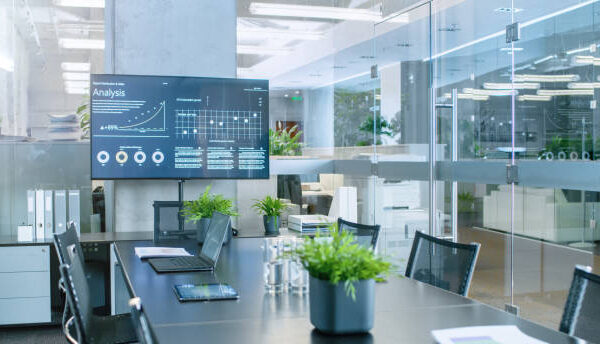Traditional methods of setting up offices follow as the workplace evolves and becomes more hybrid. Organizations naturally reevaluate the need for large offices with individual desks as employees demand more freedom and flexibility.
This is at the heart of the recent popularity of hot desking – the practice of reducing office space and using it only when needed, without individually assigned desks.
While the practice is undoubtedly more cost-effective and appealing to some groups of employees, it could also pose problems for some businesses. Reduced desk space and a move to a less customized workspace, for instance, could have an effect on company culture and cause disruptions to employees’ daily schedules. It might also pose a challenge to organizations with more rigid hierarchical structures and force them to reassess their structure.
For that reason, prior to adopting a hot desking policy, Operations and HR managers must weigh the benefits and drawbacks of this. They must decide if and how to put it into practice locally. We listed the main benefits and drawbacks of hot desking to make it easier for you to comprehend and evaluate its value to your company.
Please read on.
Why Is Hot Desking So Popular? What Is It?
The term “hot desking” has many different names, including “desk hoteling” and “free seating.” In a nutshell, hot desking is a work environment where employees are free to choose their own desk rather than having one assigned to them.
The employee-to-desk ratio is higher in hot desking workplaces than it is in traditional offices, i.e. more employees than desks. If you’ve never heard of it, the idea might seem a little strange; after all, some people won’t be seated if there are more people than desks.
Why Has Hot-desking Become More Common?
Hot-desking is becoming more and more common, probably as a result of the workplace restrictions imposed by the COVID-19 pandemic. During the peak of the pandemic, a large number of employers switched to a fully remote or hybrid work model to protect their employees and stop the disease from spreading. Later, as restrictions loosened, many of these same employers realized the benefits of remote work and changed their office setup to maintain a work-from-home or hybrid model to some extent. A solution that promoted hybrid models and adapted to the resulting changes in space needs was hot-desking.
How Does Hot Desking Differ From Co-working?
In essence, coworking spaces are shared workspaces among various businesses where each person has a specific desk. A floor or a number of workstations can be rented out by your company for an extended period of time. There is no requirement for any employee to pack up their belongings and tidy up their desk at the end of the day.
In terms of flexibility, hot desking is the older sister to coworking. Everybody can find a desk, plug in, and start working on a project-by-project basis, but you’ll have to give it up at the end of the day.
The Pros Of Hot Desking
Hot desks are becoming more and more popular, which speaks to the advantages they can have in the workplace. Here are a few of the main benefits of the office layout.
Cost Effective
Time and space are both commodities, so wasting either one results in a loss of both. Money speaks, and businesses listen.
In many large offices, 40–50% of all desks are frequently vacant. This might not seem like a significant issue to an employee. But from the viewpoint of the Corporate Real Estate (CRE) division, this is comparable to paying for something that you only use occasionally. Real estate is typically a company’s second-largest expense after payroll, so this resource waste could have a significant detrimental effect on the bottom line.
Compared to a traditional office layout, hot desking enables businesses to house more people in the same space. Large businesses are particularly drawn to hot desking because the resources saved on space can be used for other, more lucrative projects and investments.
Tailors To Flexible And Mobile Workers
The desk utilization rate—the ratio of occupied vs. vacant desks—tends to be even lower in businesses with a higher proportion of flexible and mobile workers.
For instance, it is not unusual for many employees to spend one day or less per week at work in many consulting firms or other service-oriented businesses.
Giving every employee an assigned desk in such a workplace is simply not financially sane.
Improved Space Utilization
The use of fewer desks or a smaller number of them generally results in better space utilization. Since desks must be cleaned and cleared every day, clutter is decreased and a more orderly environment is produced. This allows for more natural light to enter the room and lessens visual distractions, both of which improve focus and productivity. Additionally, it makes a good first impression on visitors from the clientele.
Promotes A Collaborative Environment
A more collaborative and social workplace environment is encouraged by hot desking. Teams or departments are largely physically cut off from one another in the traditional office setting.
By allowing employees from various departments to interact, a hot desking workplace can aid in reducing this silo-ization. New ideas are certain to emerge when people and ideas interact. Collaboration is encouraged in organizations, which increases the likelihood that employees will use their ingenuity and creativity.
Encourages Greater Equality And Improves Communication
Office hierarchy naturally flattens and the workplace becomes a more level playing field if everyone is treated equally before the desk schedule. This promotes more horizontal and vertical networking as well as more direct relationships.
Moreover, this also tends to help individuals in decision-making positions to get a better grasp of how things are “on the ground”.
![Hot Desking Top Pros And Cons [Updated]](https://www.techofficesupplies.com/wp-content/uploads/2022/11/Hot-Desking-Top-Pros-And-Cons-Updated.jpg)
The Cons Of Hot Desking
For every story, there are always two sides. It’s important to be aware of the potential drawbacks of the workplace arrangement, even though hot desking may offer appealing benefits in some circumstances.
Less Personalization
The absence of assigned spaces may cause employees to feel that their workplace is less personalized. If the office begins to lack personality, it might feel sterile and foreign, which could have an impact on company culture and employees’ sense of belonging to the organization. This may then have an effect on output and job satisfaction.
Not For Everyone
While hot desking may be an excellent fit for specific roles or departments within the organization, other types of work may suffer in the open and natural hot desking environment.
For instance, more in-depth, analytical work like programming or tasks requiring a specific tech setup might be more productive in a traditional setting.
It’s crucial to keep in mind that hot desking doesn’t have to be an all-or-nothing approach. The hybrid strategy, in which some staff members are designated for hot desking and other departments are given assigned spaces, is quickly emerging as the preferred strategy for many large corporations.
It Might Require New It Solutions
Making hot desking work requires more than just a change in policy. If you’re thinking about switching to hot desking, be ready to invest in IT resources to handle any new problems that might result from the free seating.
It’s possible that when you switch to hot desking, new, undiscovered issues will appear. For instance, how are workers supposed to find one another if they are free to sit wherever they please?
Another issue might be a race-to-the-bottom where people start arriving earlier and earlier to claim “their” desks. Consider implementing a system that enables employees to reserve their desired desk up to two days in advance to stop negative spirals like this.
Disruption Of Hierarchy
Yes, in organizations with more rigid and vertical structures, the increased equality fostered by hot desking may be perceived as an unwelcome form of disruption. A hot desking strategy will need to be adjusted to take into account this feature if your company places a lot of emphasis on the differences between employees, managers, and executives.
Increase In It Resources
While the use of hot desks may result in lower employee overhead costs and office occupancy, they may also result in higher IT costs. It might even strain the resources of an IT department.
Introducing hot desk booking software is one of the strategies that can be used to control the situation. Employees will have the freedom to select their own desks under such a system, which will free up IT resources for managing the new office setup, including maintaining workstations and networks.
Distractions Can Erode Productivity
Productivity and distraction are mutually exclusive. The more natural, unstructured environment of hot desking can be advantageous for collaborative, creative teamwork. However, even the most focused and patient worker can become distracted by sitting next to a group of people during a chaotic brainstorming session.
Provide enough spaces with few audio-visual distractions if you don’t want to gamble with your company’s productivity.
Strict Health And Safety Policies Required
You might need to put new health, safety, and cleaning policies into place to achieve the neat and orderly environment that hot desking promises. Employees will need to take more responsibility and care in this situation, and they may need to adopt new habits.
Additionally, you must take into account those workers who have more specific needs. Employees with special needs are guaranteed a workplace that is adapted for them in a traditional setting. You must make adjustments that make participation as simple for them as it was before in a hot desking environment.
Intermittent Communication Breakdown
Although it may eventually get better, communication may occasionally fail in the beginning. It can be challenging to find employees because people are in different locations every day. To handle the situation, you’ll probably need to establish new channels for communication and policies to ensure that crucial messages are delivered to everyone involved.
On the other hand, if you have remote work policies in place that already demand setting up dependable communication channels, this is not a real issue.
Read about Why Are Office Desk Chairs So Expensive
Does Your Company Need Hot Desks?
Conducting a survey among your staff is one way to determine whether hot desking might be beneficial for you. With more information, you might come to the conclusion that your company is up to the task and that the advantages outweigh the disadvantages. You might also discover that there isn’t much support for this kind of arrangement.
Additionally, before making decisions affecting the entire business, you can always test out hot desking on a smaller scale, like with just one team. You can scale back to your standard arrangement if it doesn’t work out.
Everyone may not be a fan of hot desking. Whether it is appropriate for your business will depend on its culture and how accustomed its staff is to working in an office environment. The importance that people place on having a private space should also be considered. In the end, the goal of hot desking is to boost communication, collaboration, and productivity. Finally, it is important to remember this when making a choice.
Final Words
The first and most crucial factor to take into account is whether hot desking at your current company would be a good fit for you. Hot desking may cause more harm than good if it doesn’t fit with the work environment or corporate culture of your business.
As was already mentioned, hot desking has drawbacks. However, for many contemporary businesses, the advantages frequently outweigh the disadvantages. The goal of hot desking is to increase productivity, collaboration, and creativity by bringing people together.
I appreciate you reading, a lot.

![Hot Desking Top Pros And Cons [Updated]](https://www.techofficesupplies.com/wp-content/uploads/2022/11/Hot-Desking-Top-Pros-And-Cons-Updated-2-768x432.jpg)



